
There are four solutions for indoor positioning: UWB, Wi-Fi, BLE beacon / BLE AoA. For the accuracy range, UWB is 0.1 m ~ 1 m; Wi-Fi and BLE beacon is 5 m ~ 20 m with a larger error range. As the first commercial BLE AoA positioning service company, Quuppa can control the accuracy range within 0.1 m ~ 1 m (with the TI CC254x and Nordic nRF5281x chips).

2. Analysis of Indoor Positioning Theory
No matter what kind of positioning method, the indoor positioning system needs to draw the architectural modeling of the actual scene, deploy the receiver router in the indoor area, and mark the corresponding location on the modeling map. The mobile phone or the beacon module broadcast wireless signals. The receiver router deployed in a fixed position can confirm the location area range of the beacon after received the wireless signals.

The arrival angle of the beacon signal can be measured by multiple antennas after confirmed the location area range. Combined with triangulation positioning, the accurate position of beacon equipment can be calculated.

Triangulation
Triangulation is to measure the position of the beacon device through two sets of AoA data. As shown in the figure below, two sets of antennas can measure one AoA data, and two AoA data can measure the position of device A. Both d and D are known parameters, how we can get θ1 and θ2.
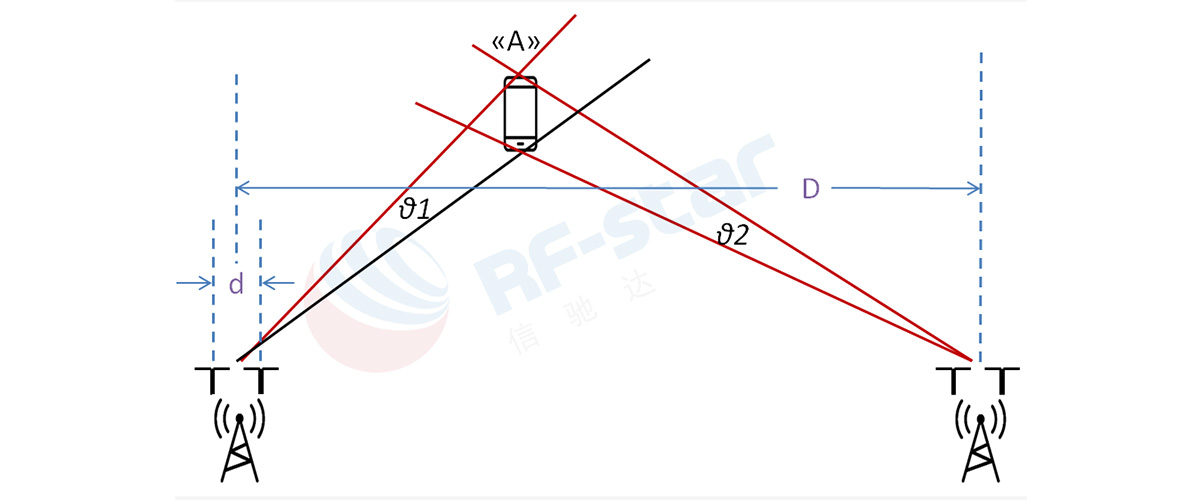
3. AoA Measurement Theory
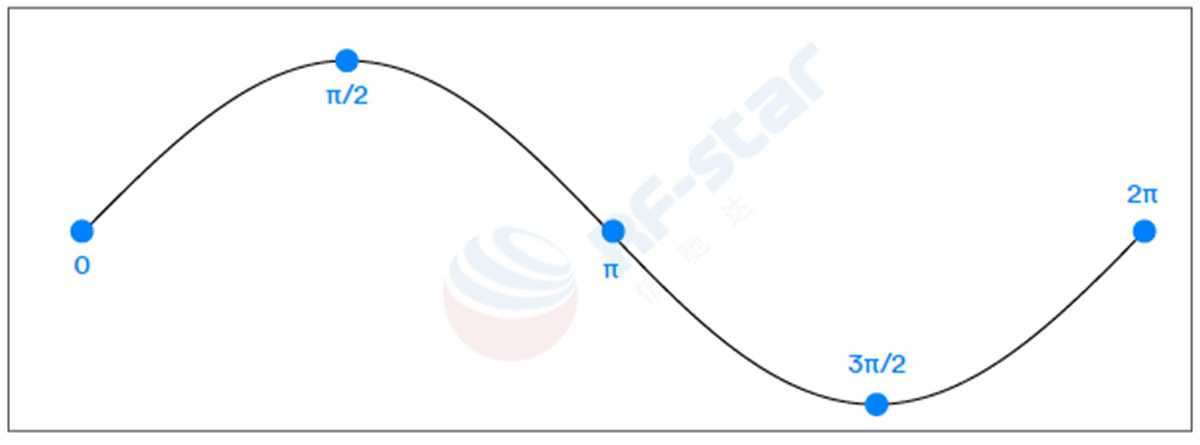
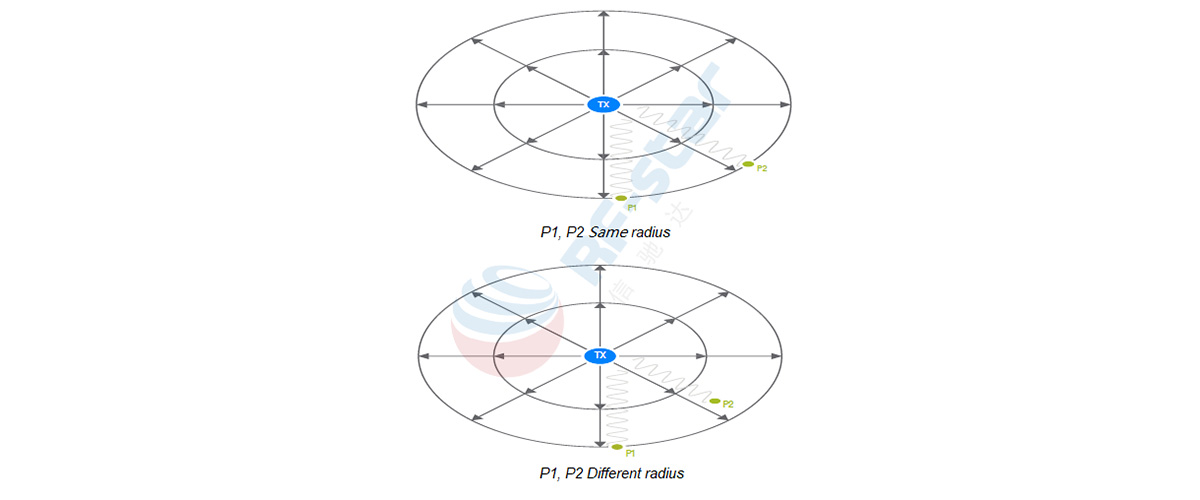
If the above diagrams are not easy to understand, let's change to the following diagrams to show the schematic. In the process of signal transmission, due to different antenna positions, the phase of the signal sampled at a certain time t is different.

Tips: In principle, the phase difference can be calculated with two antennas, and a multi-antenna array can help improve the anti-interference performance.

Taking a 2-dimensional plane as an example, there will be two angles of α. And in real three-dimensional coordinates, there will be a trajectory of a circle with a radius of α. The AoA receiver only knows that the beacon signal is on the trajectory of the circle, however, it cannot judge where they are on the circle. At this time, an orthogonal antenna array is needed to confirm the position coordinates of the beacon point.
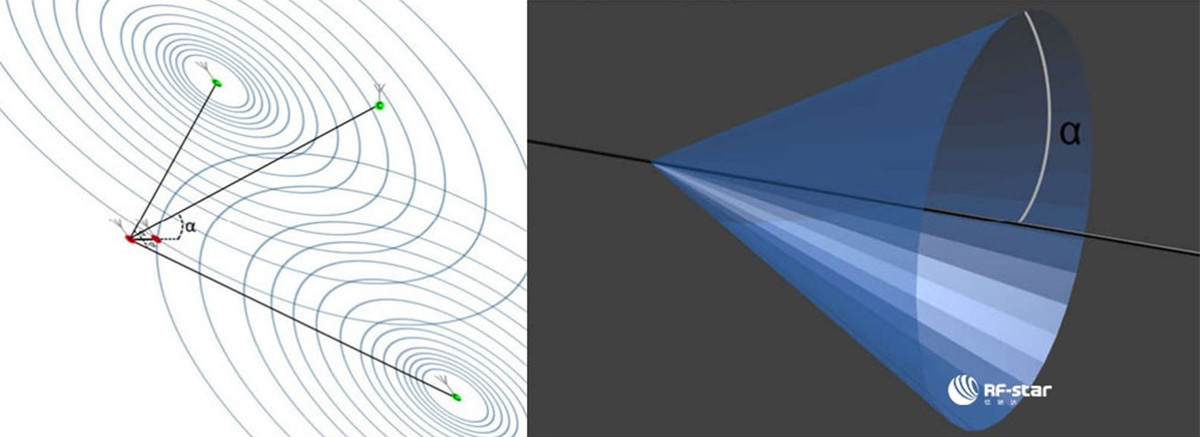
Antenna arrays can be arranged in a variety of ways. One mission is positioning, and the other mission is to minimize the number of receiver deployments. The common antenna array deployments are shown below.

Example of Antenna Array
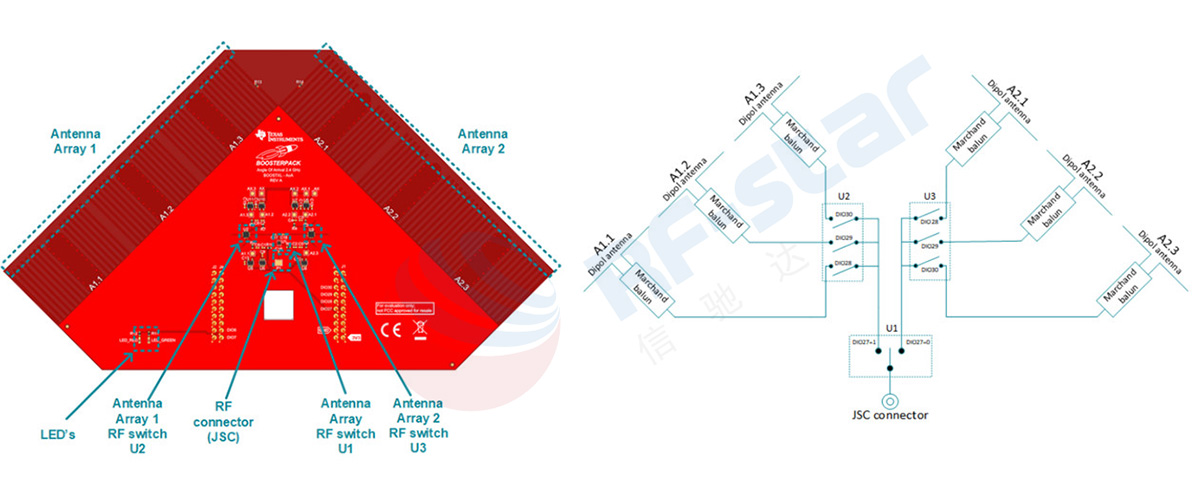

4. Bluetooth 5.1 AoA Software Deployment
The SIG has made corresponding specifications for the AoA protocol in the logical link layer in the Bluetooth 5.1 core specification.
AoA / AoD can work under 1M or 2M regular PHY (coding PHY is not supported) and can support broadcast mode and connection mode. The data transmission format has the following requirements: in the PDU data packet, the AoA/AoD specification is standardized. CTE is the extended data of AoA / AoD data packet, and the duration is 16 μs – 160 μs. The 250 kHz signal modulation is on the carrier wave without whitening and CRC validation. The signal is used by the receiver RX to sample the signal I/Q value at time t and calculate the phase difference.
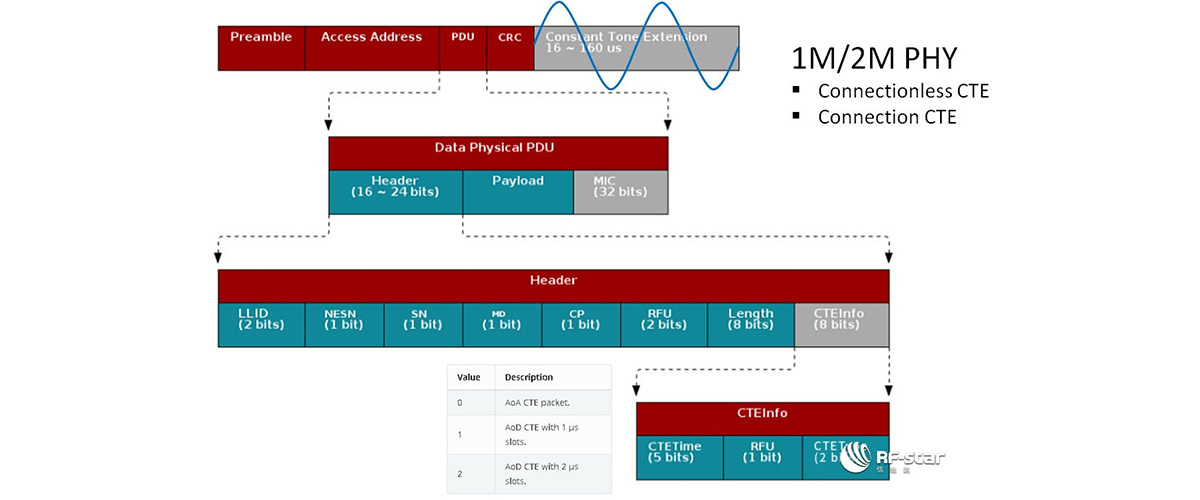
5. AoA Design Challenges
5.1 Signal Reflection Interference

5.2 Switching Time Compensation

5.3 Angle Value Error
There must be an error in the measurement, and the error range is usually 3% ~ 5%. It needs an algorithm to reduce the error.
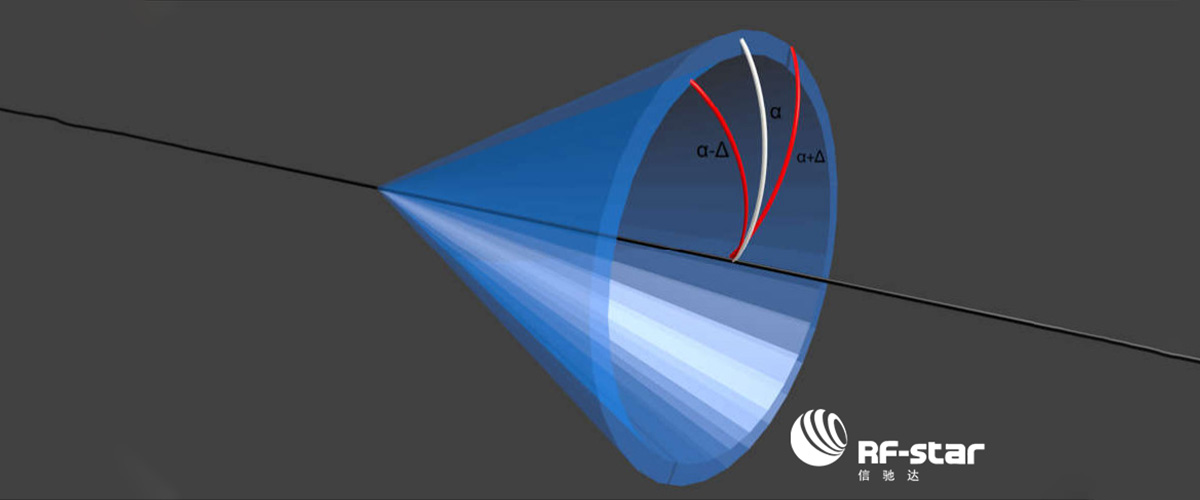
6. Related Bluetooth AoA Products
7. AoA 칩 공급업체
텍사스 인스트루먼트 AoA
실리콘랩스 AoA
대화 AoA
노르딕 AoA